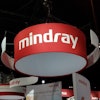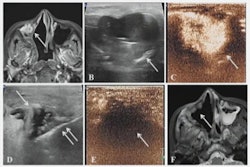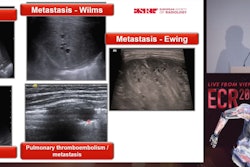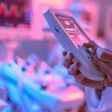Lung ultrasound can accurately guide therapies in late preterm through full-term neonates with respiratory failure occurring shortly after birth, according to research published on 28 May in JAMA Network Open.
A team led by Dr. Daniele De Luca, PhD, from AP-HP Université Paris Saclay in France found that lung ultrasound’s diagnostic accuracy for predicting surfactant need in late pre-term through full-term neonates with respiratory failure shortly after birth was similar to that observed in pre-term neonates.
“This is extremely useful for clinicians since there is no other immediately available tool to describe lung aeration and the severity of respiratory failure at the bedside," De Luca told AuntMinnieEurope.com. "Thus as immediate consequence, they can accurately decide who to treat with surfactant and who is not going to need it. This was just impossible before."
Surfactant administration may be needed in late preterm through full-term neonates to process oxygen through their bodies. The researchers noted that the pathophysiology of respiratory failure in these neonates can be different from that of early preterm neonates.
Previous studies suggest that lung ultrasonography scores guide surfactant replacement in early pre-term neonates. But the researchers pointed out a lack of data for such scoring in late pre-term through full-term neonates.
De Luca and co-authors determined whether lung ultrasound is equally accurate for predicting surfactant need in late preterm through full-term neonates as in early preterm neonates. The multi-institutional study included tertiary academic neonatal intensive care units (NICUs) in the U.S., France, Italy, and Spain.
After calculating lung ultrasound scores on six thoracic areas, the team used a scoring range from 0 (best aeration) to 18 (worst aeration).
The study included data collected in 2022 and 2023 from 157 neonates. They underwent lung ultrasonography at a median of three hours of life. Of the total, 32 (20.4%) needed surfactant administration.
The overall area under the curve (AUC) was 0.87, with the highest global accuracy being reached for lung ultrasound values higher than eight and highest sensitivity at values four or lower. This means that a score higher than eight in a neonate with respiratory failure in the first hours of life could indicate surfactant administration and reduce delayed administration or at least personalize the clinical monitoring, the researchers highlighted. A patient with a score of four or lower, meanwhile, is unlikely to have worsening respiratory failure needing surfactant.
On subgroup analysis, the team reported that accuracy of lung ultrasound was similar for neonates born late pre-term and those born early term and later. These included AUCs of 0.89 and 0.84, respectively.
Finally, after adjusting for gestational age, lung ultrasound showed significant correlations with the ratio of pulse oximetry-to-fraction of inspired oxygen (adjusted β, −10.4; p < 0.001) and the oxygen saturation index (adjusted β, 0.2; p < 0.001).
The study authors wrote that while more studies are needed, lung ultrasound calculation is “easy and not reliant on the operator’s expertise,” meaning it could be used as a triage test in hospitals lacking advanced neonatal care and needing transfer to a referral center.
"Additionally since many late preterm and term babies are born in I/II level hospital without a NICU, lung ultrasound scores can indicate who needs to be transferred to a III level venter equipped with a NICU for surf administration and mechanical ventilation," De Luca said. "This has huge logistic, financial, and public health consequences."
De Luca also told AuntMinnieEurope.com that the team is next studying whether a simple ultrasound score is enough to achieve high accuracy without the need of more complex scores that also analyze posterior lung fields.
The full study can be found here.



















